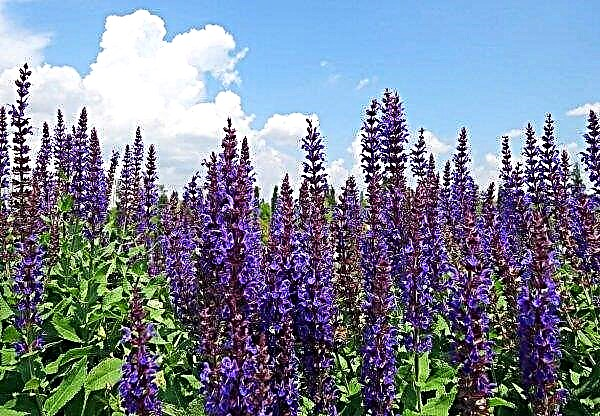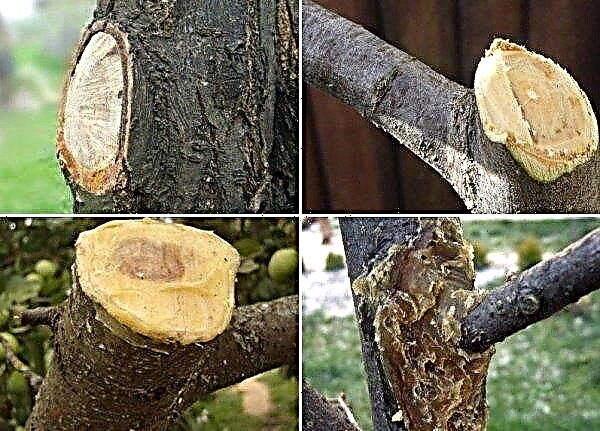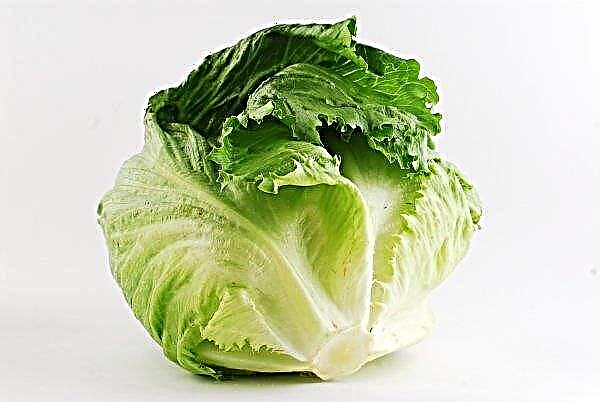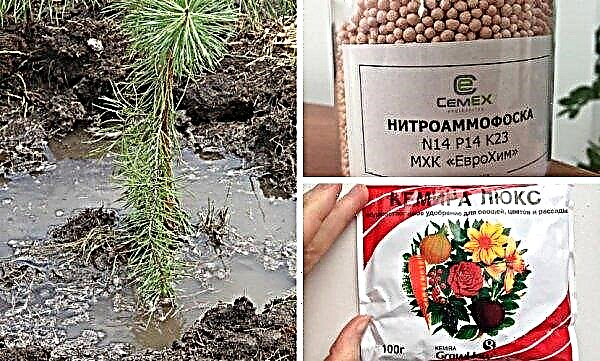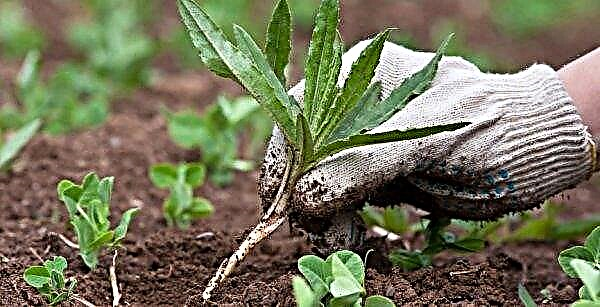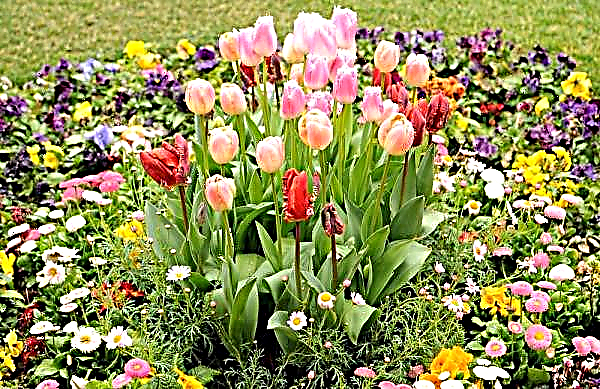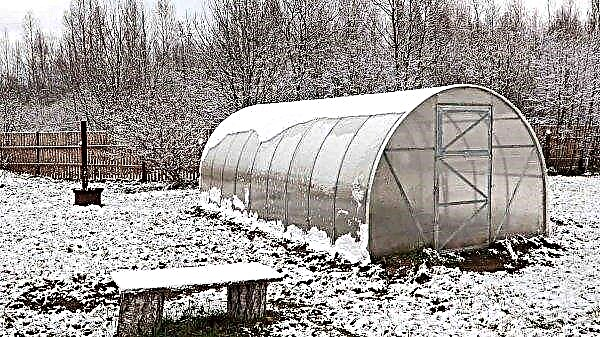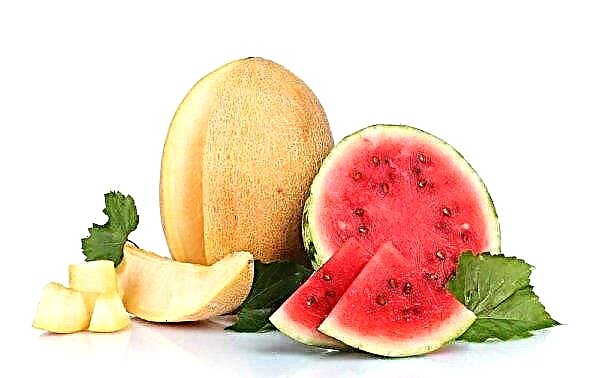Rosa Mondial stands out for its long flowering and delicate tea aroma. Many summer residents want to decorate their plots with this beauty. If you have made the same decision, you must first familiarize yourself with the recommendations for its landing and care.
Botanical description of the plant
The hybrid tea look was obtained by crossing the repair and tea roses. The Mondial variety belonging to this species was bred in 1993 by German breeders. It differs in erect narrow and medium-tall bushes, reaching 60–90 cm.
Representatives of the variety form straight stems with a small number of thorns. The leaves are large, glossy, dark green.
The buds are large, elongated, in the shape of a glass, 8–11 cm high and 8–10 cm in diameter, fragrant. Corrugated petals, terry. The flower consists of 40–45 petals. On one bush, 6–7 buds are formed. The color of the flowers is white, in the center - greenish. Flowering occurs in June and can last until October. One flower is in a loose state for about 2 weeks.
After flowering, a fruit is formed - rosehip with seeds. The variety is characterized by resistance to diseases and pests.
They grow Mondial roses in open and closed ground. In landscape design, it is used in single plantings and in flowerbeds, in combination with other flowering plants, to create hedges. A snow-white rose is often used to decorate bouquets and banquet rooms during wedding ceremonies. When cut, the buds remain decorative for up to 10-14 days.
Did you know? Japanese breeders bred a chameleon rose. In the afternoon, its petals are painted red, and with the onset of evening, they turn white.
Planting seedlings in the open ground
Rose is a whimsical and non-endurance plant. To form her strong immunity, it is necessary to plant her correctly. It is important to clearly follow the guidelines for timing, location, and the landing process.
The timing
The best time for planting a flower in the open ground is the first week of May. At this time, the threat of frost should already pass, a warm temperature should be established, and the soil should be warmed up to + 12 ° С.
Seat selection
It is better to place the rose in a well-lit place, reliably sheltered from the winds. The sun should fall on the site in the morning and evening. And in the daytime the flower should be in the shade. Direct sunlight is harmful to him.
Do not plant a rose in a lowland, in a wetland. Better to do it on a hill. Otherwise, stagnation of water will provoke decay of the root system.
Rosa prefers nutritious, loose soil with good water and air permeability, slightly acidic pH (6–6.5). The best soil options are chernozem, loamy.
Step-by-step landing process
Landing is as follows:
- Cut the roots of the seedling a little.
- Put the seedling for 2 hours in the water (you can dip it completely).
- Prepare a landing pit 60 cm deep. If you plan to plant several bushes, a distance of 30-50 cm should be observed between them.
- Prepare the soil by mixing in equal proportions: garden soil, organic fertilizers (manure, peat, humus), sand.
- At the bottom of the pit, place a layer of drainage of expanded clay, fine gravel, crushed stone, broken brick or coarse sand.
- Prepare the manure mixture by mixing 2 parts of clay, 1 part of manure and 1 part of water.
Important! If the seedlings are purchased long before planting, or the weather is cold outside, they can be stored in moist soil or sand in a cool room - basement, refrigerator.
- Dip the roots of the seedlings in the mixture.
- Place the seedling in the planting pit. The root neck should be 1.5–2 cm below the soil level.
- Cover the pit with earth.
- Tamp lightly.
- Pour warm water using 2 l.
- Make a roller out of the ground.
- Perform the earthing up, spreading a hill 15 cm high.
Care Tips
Growing a Mondial rose is not easy. It requires constant attention and regular care activities.
Watering
Rosa needs infrequent but plentiful watering. At the same time, it does not tolerate both bays and prolonged exposure to dry soil. With a lack of moisture, the leaves begin to fall, the shoots slow down the growth, buds are smaller.
Immediately after planting, while the plant will adapt, it should be watered 2-3 times a week. In the future, the frequency of humidification must be reduced. Abundant watering is needed during the production of buds. During this period, the plant needs to be saturated with moisture once a week. In spring and autumn, 1 moisturization in 1.5–2 weeks will be enough. Watering is recommended in the evening to prevent burns from droplets falling on parts of the plant. Water is poured with a thin stream under the root, trying not to spray the stems, leaves and flowers.
Watering is combined with loosening and mulching. Loosening allows you to better conduct water and air to the roots, and mulching prevents drying out and overheating of the soil and helps to preserve moisture. As mulch, humus, peat, straw, dry foliage are used.Important! Watering with cold hard water is prohibited. This provokes the development of fungal diseases and the loss of decorative roses. Use water warmed to room temperature.
Top dressing
During the growing season, the flower needs to be fed regularly. It responds well to the alternation of organic and mineral fertilizers. If it is not possible to fertilize with organics, micro and macro elements are used.
There are several ways to feed roses.
We suggest using the following scheme:
| Period | Fertilizer | Periodicity |
| Active bush growth | Nitrogen-containing (10 g of urea + 15–20 g of saltpeter + 10 l of water) | 2 times with an interval of 10 days |
| Budding | Potassium-containing (40-50 g of urea + 20-25 saltpeter + 15 g of potassium + 10 l of water) | 1 time |
| After flowering | Mineral fertilizer with a minimum amount of nitrogen (not more than 10-15 g) and high potassium content | 1 time |
Of organic fertilizers, cow manure (1: 8) and chicken droppings (1:10) are used. For foliar top dressing, wood ash, yeast are well suited.
You can also use ready-made dry mineral fertilizer, which is sold in specialized stores. The packaging should indicate that it is suitable for roses.
Dry fertilizers are scattered on moist earth in the near-stem zone, liquid fertilizers are poured under the root. Foliar top dressing is done by spraying on leaves and shoots.
Important! Fertilizing is carried out only after heavy watering. Otherwise, you can provoke a burn of the root system.
Loosening and weed control
Loosen the soil after each irrigation and rainfall, at least 1 time per month. Weeding is carried out as necessary. The rose must not be allowed to grow on a site contaminated with weeds. They will take away nutrients from her and provoke the development of diseases and the invasion of harmful insects.
Pruning
An important and mandatory procedure for roses is pruning. It helps to strengthen the plant's immunity, abundant flowering, the formation of a neat bush, serves as a prevention against diseases and pests.
The procedure is carried out in the spring, summer and autumn. At the age of one year, the plant is pruned for 2-3 buds. Then annually in the spring for 5–7 buds, leaving shoots 10–15 cm high.
Pruning in the summer promotes re-flowering. During this period, faded buds and a small part of the shoot are removed.
If you cut flowers into a bouquet, it is recommended to take no more than 2 pieces from one bush. Otherwise, the plant will weaken and lose its decorative effect.
For the winter period, the rose is pruned, leaving shoots at least 15 cm long. Do this at the end of October. Secateurs cut shoots, leaves, flowers, buds. All trimmings are to be burned.
Support
A seedling that has reached a height of more than 40 cm needs support. It is made of a wooden peg to which the top is tied. Support will be required until the stalk is well rooted.
Since the Mondial bushes do not grow tall and do not belong to the climbing species, they do not need constant support. It can only be installed as a decoration.

Shelter for the winter
After the ground part is trimmed, the flower needs to be covered. For this purpose fir spruce branches are suitable. It is also good to use peat or just sprinkle the bush with earth to a height of 20–25 cm.
If in the region where the rose grows, winters are too frosty, it is necessary to build a more serious shelter - from the frame and insulation, covered with polyethylene.
If winters are warm (up to –15 ° С) and snowy, then shelter can be omitted.
Did you know? There is a variety of roses in which buds the size of rice grains are formed. It is called "Si" (Si).
Hybrid tea rose Mondial - a beautiful and fragrant garden flower, the cultivation of which will have to make an effort. The flower requires careful care and attention. Instead, the plant will delight its owner with abundant and long flowering.


